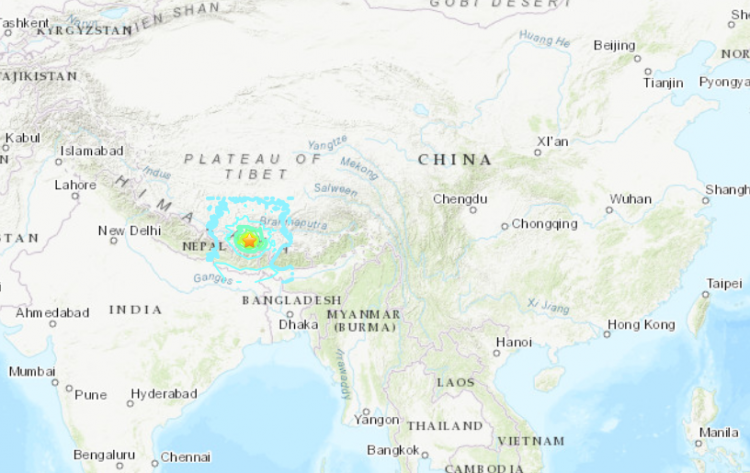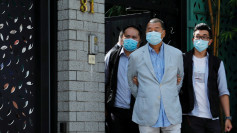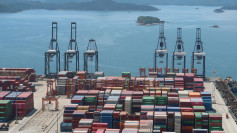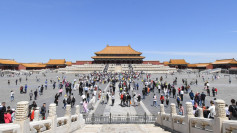A powerful earthquake struck Tibet on Tuesday morning, killing at least 95 people and injuring hundreds more in the remote high-altitude region. The 7.1 magnitude quake, which struck at 9:05 a.m. local time, rattled the Tibetan Plateau and caused extensive damage, particularly in villages close to the epicenter in Tingri County, near Mount Everest.
The tremors were felt as far as Nepal, Bhutan, and northern India, but the hardest-hit area was Tibet, where the earthquake triggered widespread destruction. At least 95 people were confirmed dead, and 130 more were injured in Tibet, according to state broadcaster CCTV. Many homes were destroyed or severely damaged, leaving residents trapped beneath rubble. In some areas, streets were littered with debris, and buildings collapsed under the force of the tremors. Rescue teams worked tirelessly, using ladders and digging through the debris with their bare hands to search for survivors.
The region around the epicenter is sparsely populated, but it includes small villages and towns where about 6,900 people reside. The damage was extensive, with more than 1,000 homes destroyed in Tibet. Videos posted by China's Ministry of Emergency Management showed rescue workers carefully lifting survivors on stretchers, as well as workers navigating collapsed structures to retrieve trapped individuals. The Chinese military and over 3,000 rescuers were deployed to assist in the search and recovery efforts, and more than 200 soldiers were immediately sent to the affected areas. Despite their best efforts, three villages in the region were cut off from communication, complicating the relief operations.
The earthquake's epicenter was located in Tingri County, in the heart of the Tibetan Plateau, where the Indian and Eurasian tectonic plates converge, making the region prone to seismic activity. The quake, which occurred at a depth of about 10 kilometers (6.2 miles), was followed by dozens of aftershocks. Shallow earthquakes of this magnitude often cause significant damage to structures, particularly in remote areas that lack the infrastructure to withstand such tremors.
The destruction extended to nearby areas, including Shigatse, a city located 111 miles from the epicenter. Although no major damage was reported in Shigatse, there were widespread tremors that caused residents to rush into the streets in panic. Surveillance camera footage from a supermarket in the city captured the moment of the earthquake, with goods falling off shelves as customers scrambled for safety.
In Nepal, the tremors were also strongly felt, especially in the capital Kathmandu. Local authorities reported widespread panic, with people rushing into the streets. The earthquake brought back painful memories of the 2015 Nepal earthquake, which devastated the region, killing nearly 9,000 people. Although no major damage was reported in Nepal, the tremors sent shockwaves through the region, and there were concerns over the safety of people living near the epicenter. The Nepalese government confirmed that at least 13 people were injured, with several homes damaged in the Solukhumbu district, near the Everest base camp.
As the aftermath of the quake unfolded, Chinese President Xi Jinping called for urgent rescue operations to be carried out and ordered that all resources be allocated to rescue efforts. The Chinese government announced that 100 million yuan ($13.6 million) would be allocated for disaster relief and recovery. In the days following the earthquake, more than 3,000 rescuers were mobilized to help those affected, with military personnel on standby to assist in recovery operations.
The quake also prompted temporary closures of areas around Mount Everest, including the base camp. Winter is not a peak season for climbing, but some tourists still visit the region for its breathtaking views of the Himalayas. Around 30 visitors were at the base camp when the earthquake struck, but they were safely evacuated. Staff members at the base camp reported feeling the tremors but confirmed that no major damage had occurred at the camp itself.






